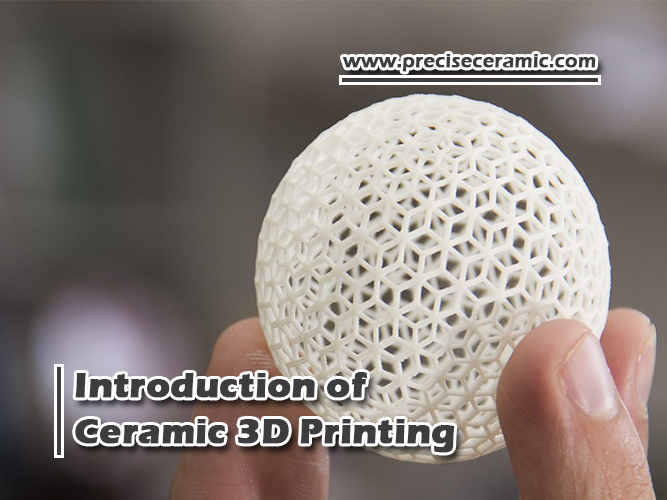Do you have any questions? Email Us
[email protected]

Traditional ceramic manufacturing technology has several disadvantages. It requires a long lead time, typically at least 8 to 12 weeks, and is not suitable for creating complex geometric configurations such as hollow spheres. Additionally, some parts of the design or certain geometric configurations cannot be mechanically processed, necessitating costly follow-up processing methods. For example, certain patterns or models require expensive carbide or diamond tools for processing before and after the ceramic sintering. As a result, small manufacturers often incur high costs and long delivery times.
Ceramic 3D printing is a much faster alternative to traditional ceramic manufacturing methods, reducing production time by up to 90% and offering delivery times as short as 5 days. This new technology not only saves time but also allows designers to make changes to their designs during the ceramic production process.

There is a wide variety of ceramic materials that can be used in 3D printing technology. These include alumina ceramic (made with alumina filler) which is slightly less hard than other ceramics, as well as very hard zirconia ceramic (made with zirconia silicate filler) which is highly wear-resistant. These ceramics can withstand high temperatures of 1500-1700 degrees and have a dielectric strength of up to 150 kV/mm.
In addition, alumina ceramic materials offer both strong wear resistance and corrosion resistance, making them an ideal choice for mechanical manufacturing raw materials.
Alumina ceramics are known for their outstanding properties, making them a popular choice in various industries. These ceramics have high strength and hardness. They also exhibit excellent wear resistance, which allows them to withstand friction, abrasion, and erosion.
Moreover, alumina ceramics are highly resistant to corrosion. They also have excellent thermal stability, meaning they can withstand high temperatures without losing their mechanical properties.
Another advantage of alumina ceramics is their excellent dielectric strength. This property allows them to withstand high voltages without breaking down.
Overall, the outstanding characteristics of alumina ceramics make them a versatile and reliable material for use in various industries.
Alumina ceramics are commonly used as nozzles in high-friction environments, such as sandblasting, where their excellent wear resistance helps to extend their lifespan. Additionally, they are used for air gun protection covers in high-temperature environments, such as welding equipment.
In corrosive environments, alumina ceramics are used as a base for installing tactile sensors in car manufacturing, where their high resistance to corrosion is critical. They are also used in electrical components, such as insulators.
Moreover, the use of ceramic 3D printing technology allows for the production of parts with complex geometric configurations, such as half-hollow structures, which can lead to significant weight reduction and cost savings in various applications. Some of the areas where these parts are used include the aerospace and automotive industries, where lightweight components are highly valued.
In conclusion, traditional ceramic manufacturing technology has several disadvantages, but with the emergence of ceramic 3D printing, the production time can be reduced by up to 90%, allowing for faster delivery and more flexibility in design changes.
Advanced Ceramic Materials (ACM) supplies high-quality ceramics and related products to meet our customers’ R&D and production needs. Please visit https://www.preciseceramic.com/ for more information.